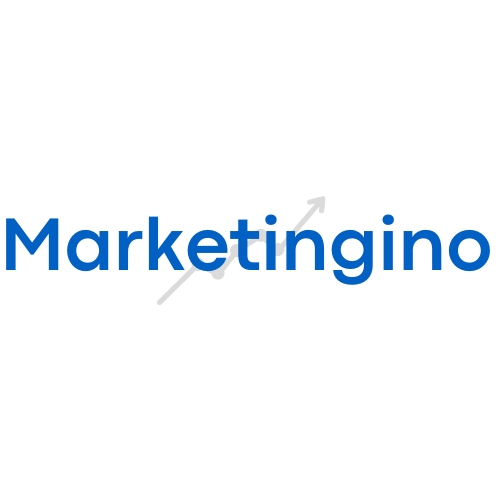Subscribe to Updates
Get the latest creative news from FooBar about art, design and business.
About
ddddf
Author: marketingino
Lidl, one of the world’s largest discount retailers, is a prime example of how a focused and efficient marketing strategy can create global impact. Known for its affordability, quality products, and no-frills shopping experience, Lidl’s marketing approach combines cost-effectiveness, customer engagement, and local adaptability. This article explores the core elements of Lidl’s marketing strategy and how they contribute to its worldwide success. 1. Brand Positioning: Affordable Quality At the heart of Lidl’s marketing strategy is its promise of delivering high-quality products at the lowest prices. This clear and consistent brand message resonates with cost-conscious consumers while emphasizing value. Lidl achieves…
Dyson, the globally renowned technology company, has redefined how we think about everyday appliances like vacuum cleaners, fans, and hairdryers. Founded by James Dyson, the company owes much of its success to its robust marketing strategy, which blends engineering innovation with premium branding. Here’s an in-depth look at Dyson’s marketing approach. Emphasis on Innovation At the heart of Dyson’s marketing strategy is its commitment to innovation. The company positions itself as a pioneer, solving common household problems with advanced engineering solutions. Dyson’s products stand out for their unique designs and patented technologies, such as the bagless vacuum cleaner and bladeless…
eBay, one of the world’s leading online marketplaces, has consistently maintained its relevance in the highly competitive e-commerce landscape. Founded in 1995, the platform connects buyers and sellers globally, offering everything from collectibles to electronics. eBay’s marketing strategy plays a crucial role in sustaining its growth and competitiveness. This article delves into the key elements of eBay’s marketing approach. Customer-Centric Approach eBay’s marketing strategy centers around its diverse customer base, which includes individual buyers, small businesses, and large-scale sellers. To cater to these groups, eBay emphasizes personalization, using advanced algorithms to tailor the shopping experience. Personalized recommendations, targeted email campaigns,…
L’Oréal, the world’s largest beauty company, has built its success on a powerful marketing strategy that blends innovation, inclusivity, sustainability, and digital transformation. Operating across 150+ countries with over 36 brands, L’Oréal caters to diverse markets, ranging from luxury beauty to mass-market products. Its marketing approach combines traditional campaigns, cutting-edge technology, and cultural relevance, ensuring it stays ahead in the competitive beauty industry. 1. Multi-Brand Strategy: Reaching Every Segment L’Oréal’s marketing genius lies in its multi-brand approach. By acquiring and creating distinct brands, L’Oréal caters to different audiences, price points, and beauty needs: By segmenting its portfolio, L’Oréal reaches everyone — from budget-conscious buyers to…
Booking.com, one of the world’s largest travel platforms, has built its dominance on a strong foundation of technology, data-driven decision-making, and customer focus. With over 28 million listings and operating in 220+ countries, Booking.com’s success is powered by a robust marketing strategy that balances performance marketing, user experience, and brand positioning. 1. Performance Marketing: The Engine of Growth A key driver of Booking.com’s success is its heavy investment in performance marketing. The company spends billions annually on channels like Google Ads, social media, and affiliate partnerships to acquire customers. This performance-driven approach ensures a steady stream of high-intent users to the platform. 2. Leveraging Data and Personalization Data is at…
Etsy has grown from a niche platform for handmade and vintage goods into a global e-commerce powerhouse valued at $9 billion. What sets Etsy apart is its authentic, customer-centric marketing strategy that highlights creativity, community, and sustainability. Unlike generic marketplaces, Etsy markets itself as a hub for personalized and meaningful shopping experiences. 1. Positioning: “Special, Not Mass Produced” Etsy’s brand positioning revolves around unique, handmade, and personalized products. While competitors like Amazon focus on convenience and speed, Etsy emphasizes: This positioning has resonated with a growing segment of consumers who prefer meaningful purchases over mass-produced goods. 2. SEO and Search Optimization Etsy’s marketplace thrives on strong Search…
Origins of Ogilvy Ogilvy, one of the most influential advertising agencies in history, was founded in 1948 by David Ogilvy. Born in England in 1911, Ogilvy had a diverse career before entering the advertising world. He worked as a chef, a door-to-door salesman, and even a British intelligence officer during World War II. This unique background helped him develop a deep understanding of consumer behavior, a cornerstone of his later success. In 1948, with financial help from his brother Francis Ogilvy, David opened the doors to Ogilvy & Mather in New York. At the time, it was a small agency with only two clients. David’s…
Bluesky Social, a decentralized social media platform, has captured the attention of millions seeking alternatives to traditional, centralized networks. Its rapid rise can be attributed not only to its technological foundation but also to a well-thought-out marketing strategy that combines exclusivity, community-driven growth, and a strong positioning as a decentralized, user-centric platform. This article explores Bluesky’s unique marketing tactics that have helped it carve a niche in the competitive social media market. 1. Positioning as a Decentralized Alternative One of Bluesky’s strongest marketing advantages lies in its positioning as a decentralized, open alternative to mainstream social platforms like Twitter and Facebook. By…
Headspace’s journey from a small meditation startup to a global leader in mindfulness and mental health is a testament not only to its transformative content but also to its highly effective marketing strategy. By combining authenticity, accessibility, and innovation, Headspace has successfully positioned itself as a trusted wellness brand in an increasingly competitive market. Let’s take a deep dive into the strategies that have propelled Headspace to success. 1. Branding Built on Authenticity and Trust At the heart of Headspace’s marketing strategy is its authentic and relatable brand identity. Headspace’s ability to feel human and relatable sets it apart from other…
In the expansive world of marketing, where strategies continually evolve to captivate audiences, the concept of Main Product Placement has emerged as a pivotal tool. Main Product Placement goes beyond the traditional boundaries of embedding products in entertainment content—it emphasizes a “hero product” that serves as the cornerstone of the story or visual narrative. This concept plays a central role in aligning brands with powerful storytelling and audience engagement. This article explores the term “Main Product Placement,” its significance, key benefits, and successful examples, illustrating why it is becoming the gold standard for product placement in movies and entertainment media. Understanding Main…



